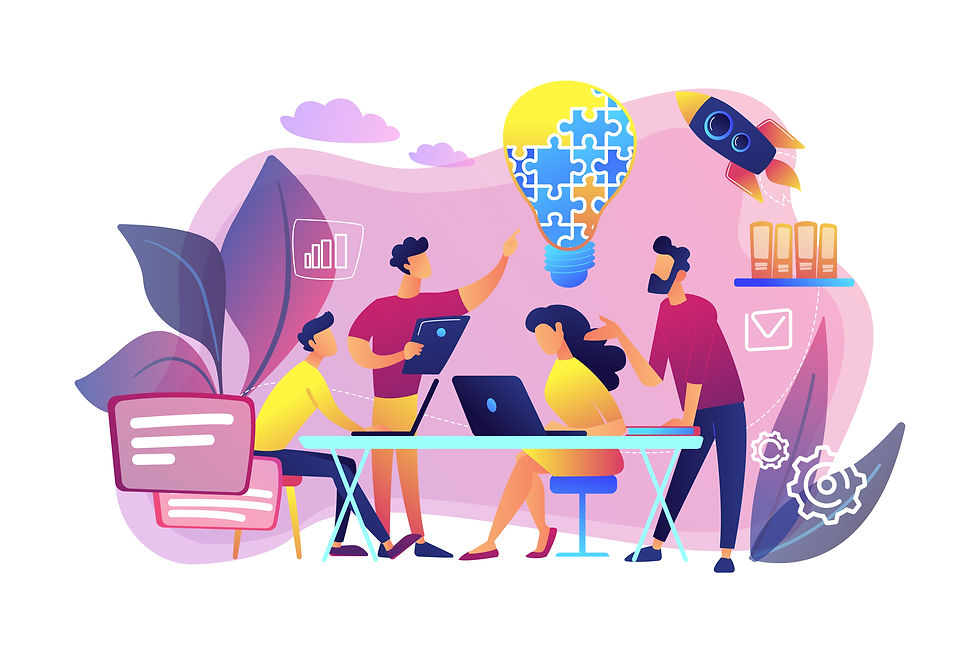Read.Watch.Listen. Licensure and Other Barriers to Entry
- SE3 Racial Equity Task Group
- Oct 28, 2022
- 3 min read
Updated: Mar 13, 2025
October 2022 Issue
A monthly forum to share diversity, equity, and inclusion resources.
Welcome to the next installment of Read.Watch.Listen. This month, we explore barriers facing engineers from historically excluded groups. These resources highlight numerous roadblocks for engineers - from the start of their profession through advancement. One of the largest barriers engineers face is their pursuit of licensure. Professional licensure is a key part of our profession, and it is critical that the engineering community takes steps to encourage it and make it an equitable process.
A recent op-ed written by the CASE Executive Committee, published in the latest issue of STRUCTURE Magazine, raised concerns over the newly-announced changes to the SE Exam. These changes include a switch to computer-based testing and an increase in test length - from a two-section, 16-hour exam to a four-section, 21-hour exam. Citing issues such as the need for more time off from employers, increased cost, and an expected decline in applicants due to computer-based testing, the authors suggest that these changes may result in more exaggerated inequities in our profession, as well as fewer engineers entering the profession as a whole.
Even though only 59% of the US population is non-Hispanic White per the 2020 census, 68% of engineers in the United States are non-Hispanic White according to Zippia.com. This number has remained largely unchanged over the last decade. The resources below address some of the reasons for this disparity and discuss how some individuals and organizations are working to change it.

Photo Credit: Freepik
Read.Watch.Listen is a monthly forum hosted by the NCSEA SE3 Committee to share and promote conversations on diversity, equity and inclusion within the structural engineering profession. Each month, we will curate a series of articles, audio-visual and digital media to facilitate self-education in matters that affect our professional practice as structural engineers. Whether you choose to read, watch, or listen (or all three!), we hope you will join us in this important conversation.
Missed the previous issue? Check out the NCSEA SE3 Committee News and Publication page. Share your thoughts and/or recommended resources for the next issue at ncsea@ncsea.com.
Black engineers disproportionately face barriers in states with licensing restrictions - The Center for Public Integrity
In 18 states, engineers with degrees in engineering technology are strictly prohibited or logistically restricted from becoming licensed professional engineers. Black engineers are twice as likely to enroll in engineering technology programs as they are to enroll in engineering programs, and these policies are creating inequitable opportunities and reducing diversity and inclusion in the engineering industry.
NSF INCLUDES Barrier Breaking to Engineering and STEM for Diverse Students - GlobalMindED
This NSF funded panel, composed by three Black, women engineers, discusses breaking barriers and increasing diversity in STEM fields. Topics in this thoughtful conversation include the experiences of the panelists, K-12 recruitment, high school curriculums, and retention of engineering students in college. *If you are short on time, the video from 36:49 to 46:29 focuses on preventing engineering students from leaving engineering programs, and the video from 47:27 to the end focuses on the experiences of women in engineering.
Breaking Barriers: Thriving on the Technical Track - Diverse: A SWE Podcast
This episode of SWE’s Diverse Podcast features an interview with Andrea Taffe, Certification Engineer at Collins Aerospace, and Linda Thomas, a recent retiree of Boeing Company. They discuss their experiences as Black women in engineering, highlighting how women are often pushed into management even when they want to be technical. *If you are short on time, consider listening from 17:16 to 24:58.
This article was originally published in the October 2022 issue of NCSEA's Structural Connection newsletter. For more information, check out NCSEA's DEI Resources.








Comments